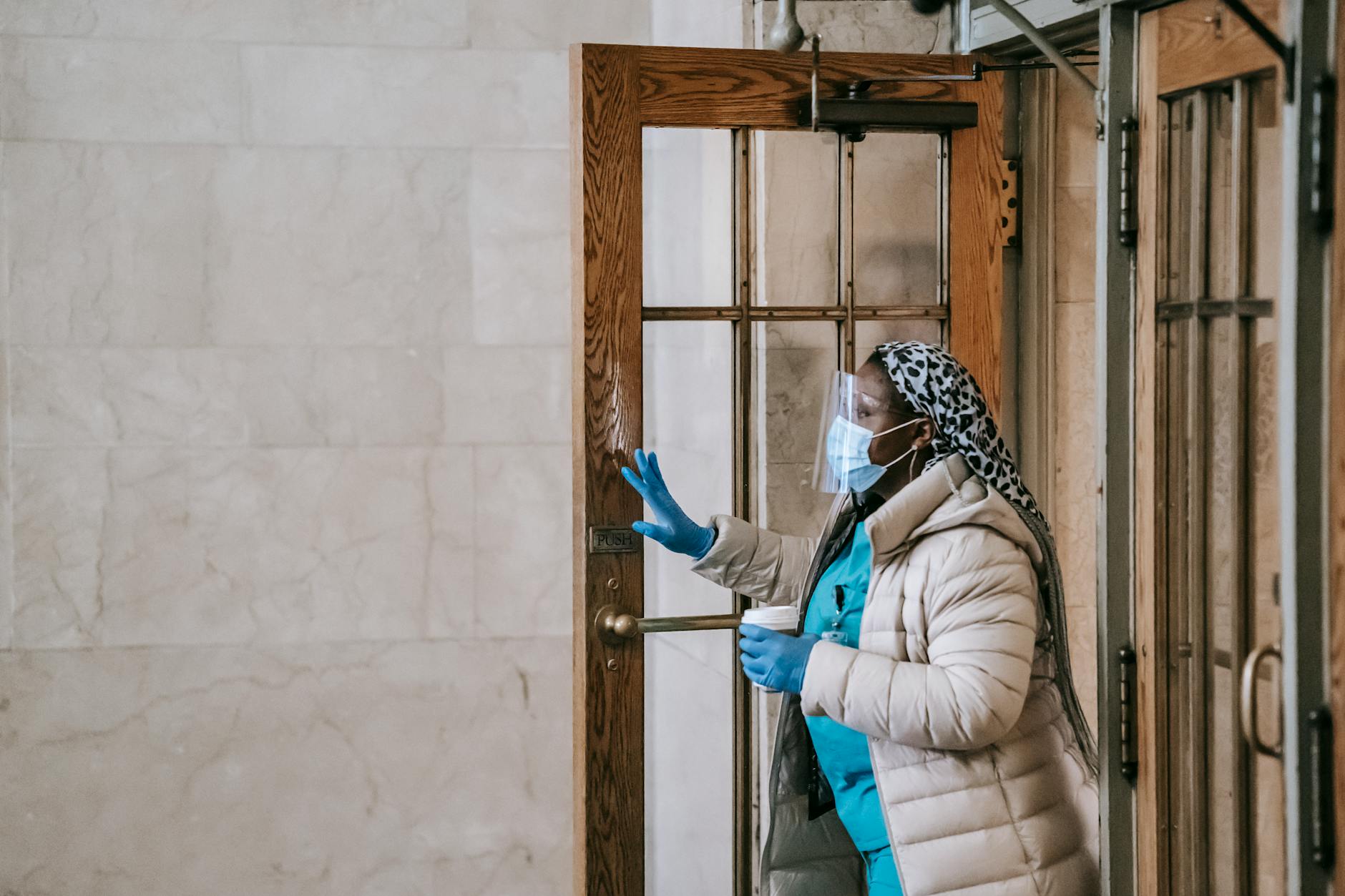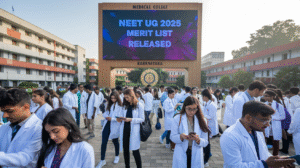Are you dreaming of a career in medicine? 🩺 The path to becoming a doctor in India starts with securing admission to an MBBS program. But with fierce competition and evolving admission processes, understanding the key eligibility criteria is crucial for aspiring medical students.
We know that navigating the complex world of MBBS admissions can be overwhelming. From NEET-UG examinations to management quotas, the landscape of medical education in India is constantly changing. That’s why we’ve put together this comprehensive guide to help you understand the essential requirements and processes for MBBS direct admission in 2025.
In this blog post, we’ll walk you through everything you need to know about MBBS admissions in India. We’ll cover the basics of the MBBS program, eligibility criteria, the NEET-UG examination, and the various types of admissions available. We’ll also provide insights into the key documents required, factors to consider when choosing a medical college, and alternative options for those who may not secure an MBBS seat. Let’s dive in and pave the way for your medical career! 🚀
Understanding MBBS in India

A. Full form and duration of MBBS
MBBS stands for Bachelor of Medicine, Bachelor of Surgery. In India, this prestigious medical degree program typically spans a duration of 5.5 years. This period includes:
- 4.5 years of rigorous academic study
- 1 year of compulsory internship
During this time, aspiring doctors gain comprehensive knowledge in various medical disciplines and hands-on clinical experience.
B. Career opportunities after MBBS
Upon completing an MBBS degree, we open doors to a wide array of career opportunities in the medical field. Some of the paths we can pursue include:
- Clinical Practice
- Specialization through Post-Graduate studies
- Research and Academia
- Public Health Services
- Medical Administration
Many of us choose to further specialize by pursuing post-graduate programs like MD (Doctor of Medicine) or MS (Master of Surgery) to enhance our expertise in specific medical domains.
C. Average fees for MBBS programs
The cost of MBBS education in India varies significantly depending on the type of institution and its reputation. We’ve compiled a table showcasing the fee structure of some top medical colleges based on the 2024 NIRF rankings:
| Institution | Type | Approximate Annual Fees (INR) |
|---|---|---|
| All India Institute of Medical Sciences (AIIMS) | Government | 6,000 – 10,000 |
| Christian Medical College (CMC) | Private | 60,000 – 75,000 |
| National Institute of Mental Health & Neurosciences (NIMHANS) | Government | 15,000 – 25,000 |
| Jawaharlal Institute of Postgraduate Medical Education & Research (JIPMER) | Government | 8,000 – 12,000 |
It’s important to note that government colleges generally have lower fees compared to private institutions. The fees can range from as low as ₹6,000 per year in premier government institutions like AIIMS to several lakhs in private colleges.
We must also consider additional expenses such as:
- Hostel fees
- Books and study materials
- Medical equipment
- Miscellaneous living expenses
These factors contribute to the overall cost of pursuing an MBBS degree in India.
Now that we have covered the basics of MBBS in India, including its full form, duration, career prospects, and fee structure, we’ll move on to discuss the crucial “Eligibility Criteria for MBBS Admission”. This next section will provide essential information for aspiring medical students looking to embark on their MBBS journey.
Eligibility Criteria for MBBS Admission

Now that we’ve covered the basics of MBBS in India, let’s delve into the crucial eligibility criteria for MBBS admission. Understanding these requirements is essential for aspiring medical students looking to pursue their dreams of becoming doctors.
A. Age requirement
When it comes to MBBS direct admission eligibility, age plays a significant role. While the reference content doesn’t provide specific age requirements for MBBS in India, we can draw insights from international standards. For instance, Harvard Medical School (HMS) emphasizes the importance of candidates being current students in good standing or graduates from accredited colleges. This suggests that most applicants are typically in their early to mid-20s.
B. Academic qualifications
Academic qualifications form the cornerstone of MBBS admission criteria. We’ve compiled a list of key academic requirements based on the information provided:
- Strong intellectual credentials
- Proficiency in biological and physical sciences
- Well-rounded education including humanities and social sciences
- Completion of prerequisite coursework
- Minimum of three years of college work
- Baccalaureate degree
It’s worth noting that these qualifications align closely with international standards, such as those set by Harvard Medical School. For Indian students considering MBBS programs in the USA, the academic expectations are similarly rigorous:
| Requirement | Details |
|---|---|
| GPA | 3.7 or higher |
| Pre-med coursework | Completion required |
| Standardized tests | MCAT and TOEFL scores |
C. NEET-UG qualification
While the reference content doesn’t explicitly mention NEET-UG, it’s crucial to address this aspect for MBBS admissions in India. The National Eligibility cum Entrance Test (Undergraduate) is a standardized examination that plays a pivotal role in MBBS admissions across the country.
For Indian students pursuing MBBS in the USA, it’s important to note that they may not need to take NEET-UG. Instead, they would focus on other standardized tests like the MCAT (Medical College Admission Test) and TOEFL (Test of English as a Foreign Language) as part of their application process.
We should also highlight that studying MBBS in the USA offers several advantages for Indian students:
- Elimination of additional entrance exams to practice medicine in India
- Global recognition of qualifications (WHO and ECFMG)
- Favorable job market due to projected physician shortage
- Diverse career opportunities in various medical specializations
It’s important to note that while we’ve focused on general eligibility criteria and some USA-specific information, the exact requirements may vary depending on the institution and country of study. Prospective students should always verify the specific eligibility criteria with their chosen medical schools.
With these eligibility criteria in mind, we’ll next explore the NEET-UG examination in more detail, which is a crucial step for those pursuing MBBS in India.
NEET-UG Examination

Now that we have covered the eligibility criteria for MBBS admission, let’s delve into the crucial aspect of the NEET-UG examination. This standardized test plays a pivotal role in the admission process for aspiring medical students across India.
A. Importance of NEET for MBBS admission
The National Eligibility cum Entrance Test for Undergraduate courses (NEET-UG) has become the cornerstone of medical admissions in India. We cannot stress enough how vital this examination is for those seeking to pursue a career in medicine. Here’s why NEET-UG is so important:
-
It serves as a uniform entrance test for various medical disciplines, including:
- Bachelor of Ayurvedic Medicine and Surgery (BAMS)
- Bachelor of Unani Medicine and Surgery (BUMS)
- Bachelor of Siddha Medicine and Surgery (BSMS)
- Bachelor of Homeopathic Medicine and Surgery (BHMS)
-
NEET-UG ensures a standardized assessment of candidates, promoting fairness and transparency in the admission process.
-
It aligns with international standards, facilitating admissions into premier medical institutions across India.
B. Minimum score requirements
While the reference content doesn’t provide specific minimum score requirements, we can highlight some key points about the scoring system:
- The National Testing Agency (NTA) releases a Score Card for NEET-UG.
- A Re-revised Score Card is issued to ensure accuracy and address any discrepancies.
- The Final Answer Key is made available to candidates, allowing them to understand their performance better.
It’s crucial for aspirants to aim for the highest possible score to secure admission to their desired medical colleges. The competition is fierce, and every mark counts in the final rankings.
C. Preparation strategies
To excel in the NEET-UG examination, we recommend the following preparation strategies:
-
Stay updated with official announcements:
- Keep an eye on the NTA website for important updates and notices.
- Pay attention to any changes in exam patterns or syllabus.
-
Familiarize yourself with the exam structure:
- Understand the types of questions asked.
- Practice time management with mock tests.
-
Focus on core subjects:
- Biology
- Physics
- Chemistry
-
Utilize available resources:
- Study materials provided by NTA
- Previous years’ question papers
- Online mock tests
-
Plan for contingencies:
- Be prepared for potential reconduct of exams (as seen in the 2024 NEET-UG).
- Stay informed about city-wise exam centers and any changes in venue.
Here’s a breakdown of the key dates and events for NEET-UG 2025:
| Event | Date/Status |
|---|---|
| Advance City Intimation | Available |
| Exam Date | To be announced |
| Registration Window | Open and extended |
| Result Declaration | Post-exam (date to be announced) |
We emphasize the importance of staying vigilant about any updates or changes in the examination process. The NTA may release public notices or revise certain aspects of the exam, as we’ve seen with the 2024 NEET-UG.
As we move forward, it’s essential to remember that NEET-UG is just the first step in your journey towards an MBBS degree. With this in mind, next, we’ll explore the admission process for MBBS, which will guide you through the next stages after clearing the NEET-UG examination.
Admission Process for MBBS
Now that we’ve covered the NEET-UG Examination, let’s delve into the crucial next step: the admission process for MBBS. This process is designed to ensure that qualified candidates are placed in medical colleges across India based on their performance and preferences.
A. Online counseling rounds
We begin the MBBS admission process with online counseling rounds, which are conducted by the Medical Counselling Committee (MCC) for 15% of the All India Quota seats, as well as for various deemed and central universities. The remaining 85% of seats are managed by state authorities. Here’s what we need to know about this stage:
- Registration: We must register on the MCC portal, providing our personal details and NEET-related information.
- Fee payment: A counseling fee is required to participate in the process.
- Preference filling: We’ll need to list our preferred colleges and courses in order of priority.
- Multiple rounds: The counseling typically occurs in multiple rounds to ensure maximum seat allocation.
B. Document verification
Once we’ve completed the online registration, the next crucial step is document verification. This process ensures that all candidates meet the eligibility criteria and have the necessary qualifications. Here’s a list of documents we’ll need to prepare:
- NEET admit card
- NEET scorecard
- Class 10 and 12 certificates
- Valid ID proof
- Other relevant certificates (category, domicile, etc.)
It’s essential that we have all these documents ready and verified to avoid any delays or disqualification from the admission process.
C. Seat allocation procedure
The final stage of the admission process is the seat allocation procedure. This is where our NEET performance and preferences come into play. Here’s how it works:
-
Merit-based allocation: Seats are allocated based on our NEET rank and the preferences we’ve listed.
-
Cutoff scores: We must meet the NEET cutoff scores to be eligible for counseling:
- General category: 50th percentile
- Reserved categories: 40th percentile
-
Rounds of allocation: Multiple rounds ensure that maximum seats are filled and candidates have opportunities to improve their allotments.
Here’s a simplified overview of the seat allocation process:
| Round | Process | Outcome |
|---|---|---|
| 1 | Initial allocation based on rank and preference | Seat allotted or moved to next round |
| 2 | Reallocation for unoccupied seats | Improved allotment or retention of previous seat |
| Mop-up | Filling of remaining vacant seats | Final chance for seat allocation |
It’s important to note that the admission process is highly competitive. With over 1 lakh MBBS seats available across more than 600 medical colleges, including prestigious institutions like AIIMS and JIPMER, securing a seat requires not just a good NEET score but also strategic decision-making during the counseling process.
We should also be aware that for those of us with lower NEET scores, there are still opportunities through state counseling, management quotas, or NRI quotas in private colleges. However, these options often come with higher fees, which can be a significant factor for many middle-class students.
As we move forward, it’s crucial to understand the various types of MBBS admissions available, which we’ll explore in the next section. This knowledge will help us make informed decisions during the counseling process and increase our chances of securing a seat in our preferred medical college.
Types of MBBS Admissions
Now that we’ve covered the admission process for MBBS, let’s delve into the various types of MBBS admissions available to aspiring medical students. Understanding these different quota systems is crucial for those seeking to pursue their medical education in India.
A. Government quota admissions
Government quota admissions form the backbone of MBBS admissions in India. These seats are primarily filled based on merit through the NEET-UG examination. We’ve observed that candidates who secure high percentiles in NEET have a better chance of securing admission through this quota. The government quota typically offers more affordable education compared to other admission types.
B. Management quota admissions
Management quota admissions provide an alternative pathway for students who may not meet the minimum eligibility criteria for direct admission into medical colleges. This quota allows candidates to gain entry based on their academic performance and other talents.
Key features of management quota admissions include:
- Eligibility: Candidates must be 17 years old, have completed 10+2 in the science stream, and possess a valid NEET scorecard.
- Admission process: It involves two rounds of online counseling, followed by a MOP-UP round for unallocated seats.
- NEET cutoff: Different percentiles are required for various categories.
Here’s a comparison of the advantages and disadvantages of pursuing MBBS through management quota:
| Advantages | Disadvantages |
|---|---|
| Increased admission chances | Higher fees |
| Access to superior facilities | Potential lack of transparency |
| Flexible admission criteria | Variable quality of education |
| Reduced stress | Limited clinical exposure compared to government colleges |
| Faster admission process | Fewer job opportunities |
| Better clinical exposure opportunities | Stigma associated with management quota admissions |
We’ve found that many deemed and private universities across various states offer MBBS seats through management quota. The admission process is generally conducted on a first-come-first-serve basis, depending on available vacancies.
C. NRI quota admissions
NRI quota admissions cater to Non-Resident Indians, Persons of Indian Origin (PIO), and Overseas Citizens of India (OCI). While we don’t have specific details about this quota in our reference content, it’s important to note that this quota exists as another pathway for eligible candidates to pursue MBBS in India.
As we consider these different types of MBBS admissions, it’s crucial to remember that each quota has its own set of requirements and processes. We advise prospective students to carefully evaluate factors such as fee structures, college reputation, and infrastructure when selecting an institute for MBBS, especially under the management quota.
With this understanding of the various admission types, we’ll next explore the key documents required for MBBS admission, which are essential regardless of the quota you’re applying through.
Key Documents Required for MBBS Admission

Now that we’ve explored the various types of MBBS admissions, let’s delve into the crucial documents required for securing your spot in a medical college. We’ll guide you through the essential paperwork needed to complete your MBBS admission process successfully.
A. Educational certificates
When it comes to MBBS admissions, your academic achievements play a pivotal role. We understand the importance of showcasing your educational background, which is why you’ll need to provide the following documents:
- Class 10 certificate and marksheet
- Class 12 certificate and marksheet
- Character certificate
- Transfer certificate
- Migration certificate (if applicable)
It’s crucial to note that these documents must be in English or Hindi. If any of your certificates are in a local language, we recommend getting them translated and attested to avoid any complications during the verification process.
B. NEET scorecard
The NEET scorecard is undoubtedly one of the most critical documents in your MBBS admission journey. We cannot stress enough how important it is to have this ready. Here’s what you need to prepare:
- NEET UG 2025 Admit Card
- NEET UG 2025 Result/Scorecard
- Merit list (if applicable)
Remember, the National Testing Agency (NTA) will provide specific guidelines for the NEET Counselling 2025. We advise you to stay updated with the latest announcements from the Medical Counselling Committee (MCC) to ensure you have all the necessary documentation.
C. Identity and age proof
Verifying your identity and age is a crucial step in the admission process. We recommend having multiple forms of identification ready to streamline the verification process. Here’s a list of accepted documents:
- Aadhar Card
- Passport
- Date of Birth Certificate
| Document Type | Purpose | Notes |
|---|---|---|
| Aadhar Card | Identity Proof | Widely accepted across India |
| Passport | Identity and Age Proof | Essential for NRI/OCI applicants |
| Birth Certificate | Age Proof | Ensure it’s issued by a competent authority |
Additionally, you’ll need to provide:
- Recent passport-sized photographs
- Government-issued identity proof
- Medical fitness certificate
For candidates applying under specific categories, we recommend preparing these additional documents:
- Caste certificate (for OBC, SC, ST candidates)
- EWS certificate (for Economically Weaker Section candidates)
- Disability certificate (for PwD candidates)
It’s worth noting that NRI and OCI students have extra requirements, including:
- Sponsorship affidavit
- Passport copy of the sponsor
- Relationship affidavit
We cannot emphasize enough the importance of having all these documents ready before the counselling process begins. The NEET 2025 counselling is expected to start in July 2025, following the results announcement on June 4, 2025. We advise you to mark your calendars and prepare well in advance.
As we wrap up this section on key documents, it’s important to remember that thorough preparation can significantly reduce stress during the admission process. With these documents in order, we’re ready to move on to the next crucial step in your MBBS journey. In the following section, we’ll explore the factors to consider when choosing a medical college, helping you make an informed decision about your future in medicine.
Factors to Consider When Choosing a Medical College
Now that we’ve covered the key documents required for MBBS admission, let’s explore the crucial factors to consider when choosing a medical college. This decision is pivotal in shaping your medical education and future career.
A. College affiliations and recognition
When selecting a medical college, we must prioritize institutions based on their affiliations and recognition. While the Medical Council of India doesn’t provide official rankings, we can rely on other reputable sources:
- The National Institutional Ranking Framework (NIRF) lists the top 40 medical colleges in India.
- Renowned institutions like AIIMS and JIPMER are often considered top choices.
It’s important to note that many institutions don’t participate in NIRF evaluations, leaving a significant number unranked. Therefore, we recommend considering other factors alongside rankings.
B. Quality of faculty and infrastructure
The quality of education you receive is directly influenced by the faculty and infrastructure of the college. We suggest evaluating the following aspects:
- Age of the college: Older institutions often have established reputations and experienced faculty.
- Number of MBBS and PG seats: This can reflect the quality of education and infrastructure.
- Hospital infrastructure: Ideally, look for colleges with associated hospitals having more than 500 beds.
- Postgraduate courses: A higher number of PG courses can enhance the learning experience through mentorship opportunities.
| Factor | Importance |
|---|---|
| Age of college | Indicates established reputation |
| MBBS seats | Reflects educational quality |
| Hospital beds | >500 for quality experience |
| PG courses | Enhances learning opportunities |
C. Clinical exposure opportunities
Clinical exposure is crucial for developing practical skills in medical education. We recommend considering these factors:
- Patient flow in associated hospitals: Higher patient flow indicates better clinical exposure.
- Compulsory rural service requirements: This varies by state and can provide unique clinical experiences.
- Internship stipends: While less critical, this can influence your clinical training experience.
To make an informed decision, we suggest using resources like the MBBSCouncil Android App, which offers comprehensive details on these factors. This can aid in effectively ranking colleges during choice filling for both All India and State Counselling.
When evaluating clinical exposure, also consider:
- The college’s location, as it impacts patient demographics and accessibility to educational resources.
- The diversity of cases you’ll encounter during your training.
- Opportunities for hands-on experience in various medical specialties.
As we move forward to discuss alternative options for aspiring medical students, it’s crucial to keep these factors in mind. By carefully considering college affiliations, faculty quality, infrastructure, and clinical exposure opportunities, we can make a well-informed decision about our medical education journey.
Alternative Options for Aspiring Medical Students

Now that we’ve explored the factors to consider when choosing a medical college, let’s delve into alternative options for aspiring medical students who may not pursue the traditional MBBS path. These alternatives can provide exciting opportunities in the healthcare field for those who don’t meet the eligibility criteria for MBBS direct admission or wish to explore different avenues.
Other healthcare courses in India
We understand that not everyone can or wants to pursue an MBBS degree. Fortunately, there are numerous other healthcare courses available in India that offer rewarding career paths. Let’s explore some of these options:
-
Alternative Medicine: For those interested in holistic approaches to healthcare, courses in Ayurveda, Homeopathy, Naturopathy, and Unani are excellent choices. These programs typically last 4.5 to 5.5 years and require completion of class 12th in science with NEET qualification. Some notable institutions offering these courses include:
Institution Course Fees (INR) OPJS University BAMS/BHMS 53,475 – 3,00,000 National Institute of Siddha BSMS Not specified -
Paramedical Courses: These courses offer a cost-effective route into the medical field and include options like BSc Nursing and BPT. They generally span 3 to 4 years and require a science background with at least 50% marks. Top colleges for paramedical courses include:
College Course Fees (INR) AIIMS Delhi BSc Nursing 1,685 PGIMER Chandigarh BPT 79,800 -
Pharmacy: This field covers drug discovery and manufacturing. A bachelor’s degree in pharmacy lasts four years and requires a science background. Some prestigious institutions offering pharmacy courses are:
University Fees (INR) Jamia Hamdard University 29,400 Panjab University 90,500 -
Forensic Science: For those interested in crime investigation, a 3-year BSc program in Forensic Science is an excellent option. Admissions can be through merit or entrance exams like DUET.
-
Hospital and Healthcare Administration: These programs last three years and are open to candidates from any stream. They focus on managing healthcare facilities and systems.
-
Veterinary and Animal Sciences: This 5.5-year program focuses on animal treatment and requires a science background and NEET qualification.
-
Biotechnology: These 3-year courses delve into technology’s application in life sciences. Admission is based on a science background and entrance exams like NPAT.
MBBS abroad opportunities
For those still keen on pursuing an MBBS degree but unable to secure admission in India, studying abroad can be a viable option. Many countries offer MBBS programs for international students, often with more lenient admission criteria. Some popular destinations include:
- Russia
- Ukraine
- China
- Philippines
- Caribbean countries
These programs usually have lower tuition fees compared to private medical colleges in India and may not require NEET scores for admission.
Requirements for practicing in India after foreign MBBS
We must emphasize that if you plan to practice medicine in India after completing your MBBS abroad, there are specific requirements you need to fulfill:
-
FMGE Screening Test: You must clear the Foreign Medical Graduate Examination conducted by the National Board of Examinations.
-
Registration with State Medical Council: After clearing the FMGE, you need to register with the state medical council where you intend to practice.
-
Internship: You may be required to complete a one-year internship in India, depending on the country where you obtained your degree.
-
Language Proficiency: Ensure you have adequate proficiency in the local language of the state where you plan to practice.
By exploring these alternative options, we hope to provide a comprehensive view of the various paths available in the healthcare field. Whether you choose an alternative medicine course, a paramedical program, or decide to pursue MBBS abroad, each option offers unique opportunities for aspiring medical professionals.

As we’ve explored the key eligibility criteria for MBBS direct admission in India, it’s clear that the landscape of medical education has evolved significantly. The introduction of NEET-UG as a mandatory entrance exam for all medical colleges, including management and NRI quota seats, has streamlined the admission process and enhanced transparency. We’ve highlighted the importance of meeting age requirements, achieving the necessary academic scores, and understanding the various admission pathways available.
We encourage aspiring medical students to thoroughly research their options, considering factors such as college affiliations, patient exposure, faculty quality, and overall costs when choosing a medical institution. While the path to becoming a doctor may seem challenging, it’s crucial to remember that alternative healthcare courses and opportunities to study MBBS abroad exist for those who may not immediately qualify for NEET. By staying informed about the admission processes, preparing the required documents, and maintaining a strong academic foundation, you’ll be better equipped to pursue your dream of a career in medicine. We wish you the best of luck in your journey towards becoming a healthcare professional!
💬 Instant WhatsApp Support
Get real-time assistance for urgent queries about applications & deadlines
Average response time: 15 minutes
📞 One-on-One Consultation
Speak directly with our senior admission counselors for comprehensive guidance
Available Mon-Sat: 9 AM - 7 PM IST
Sunday: 10 AM - 4 PM IST
📩 Detailed Inquiry Form
Share your details and our experts will craft a personalized admission strategy






